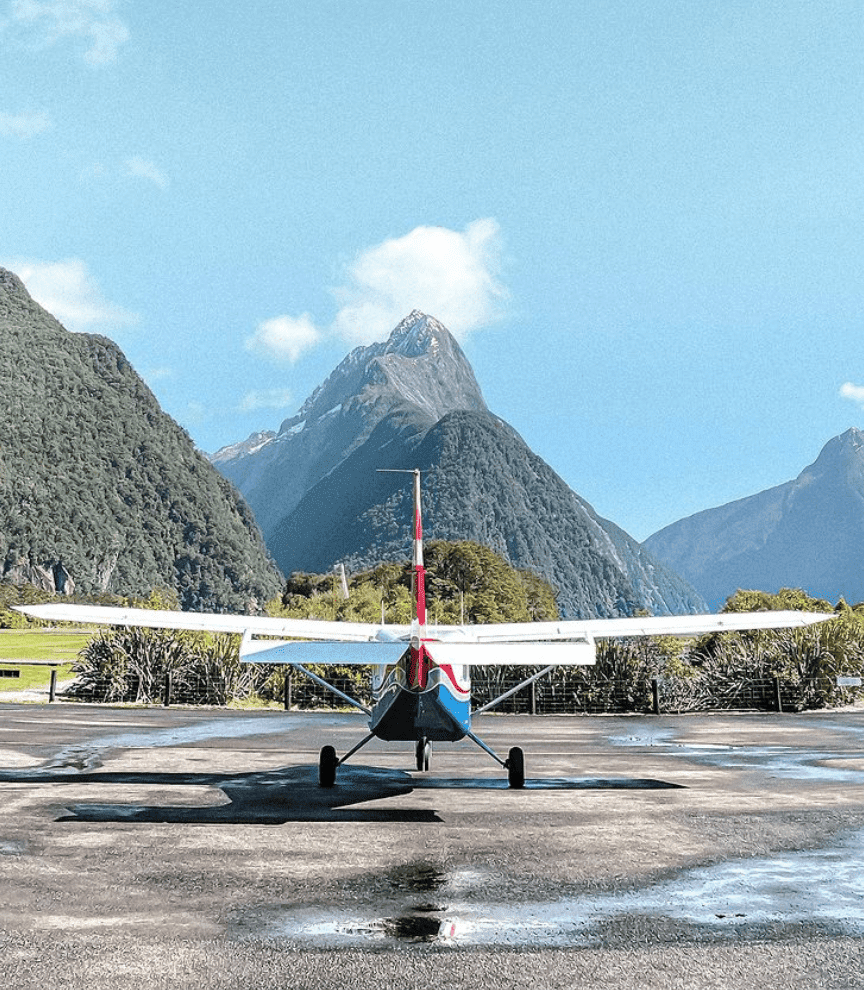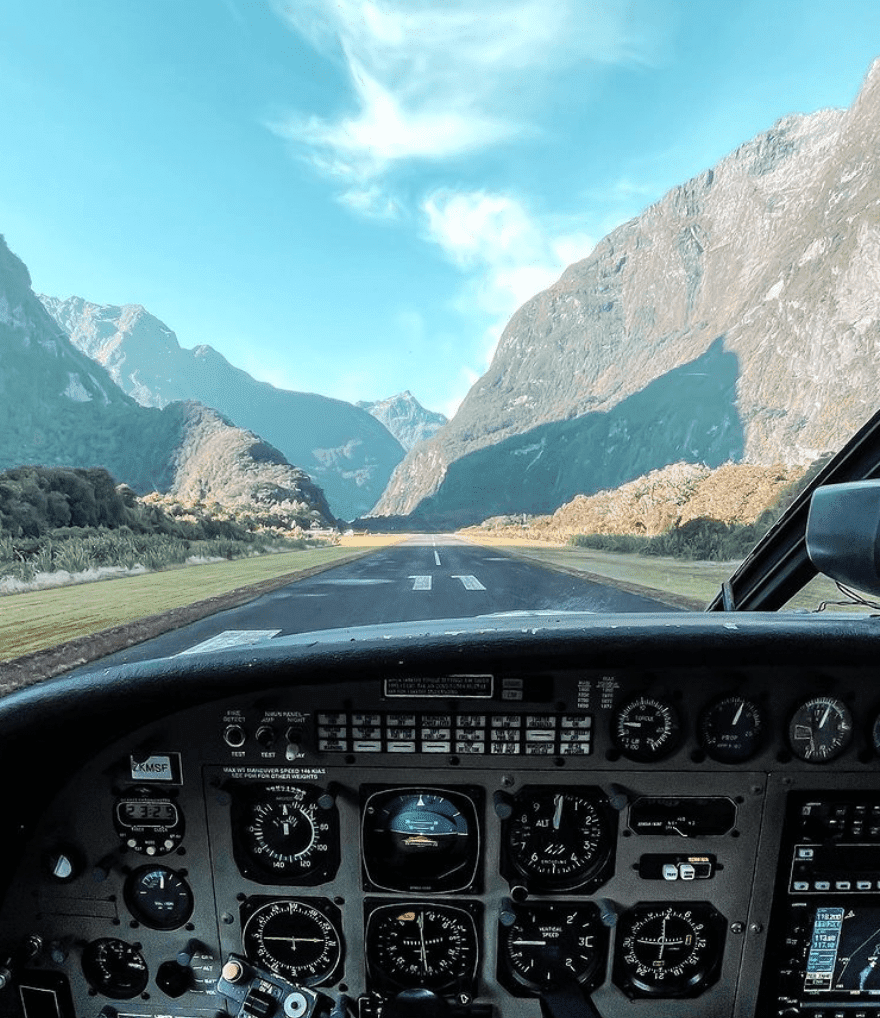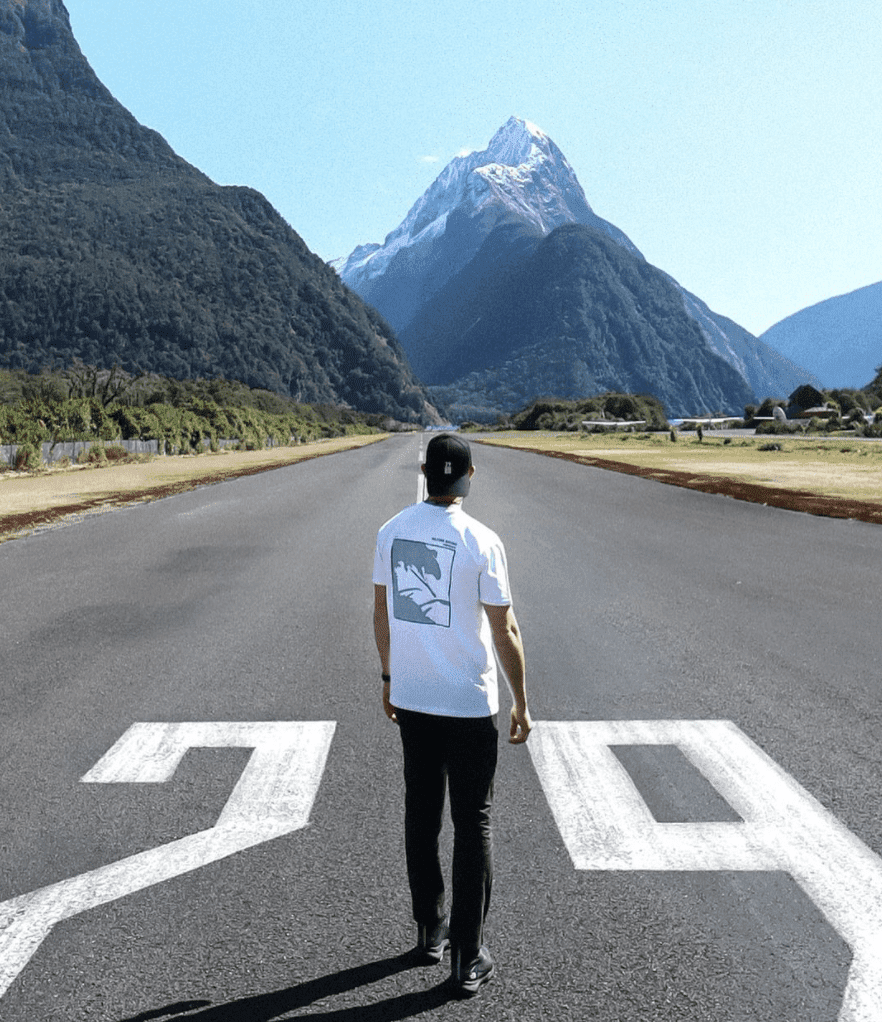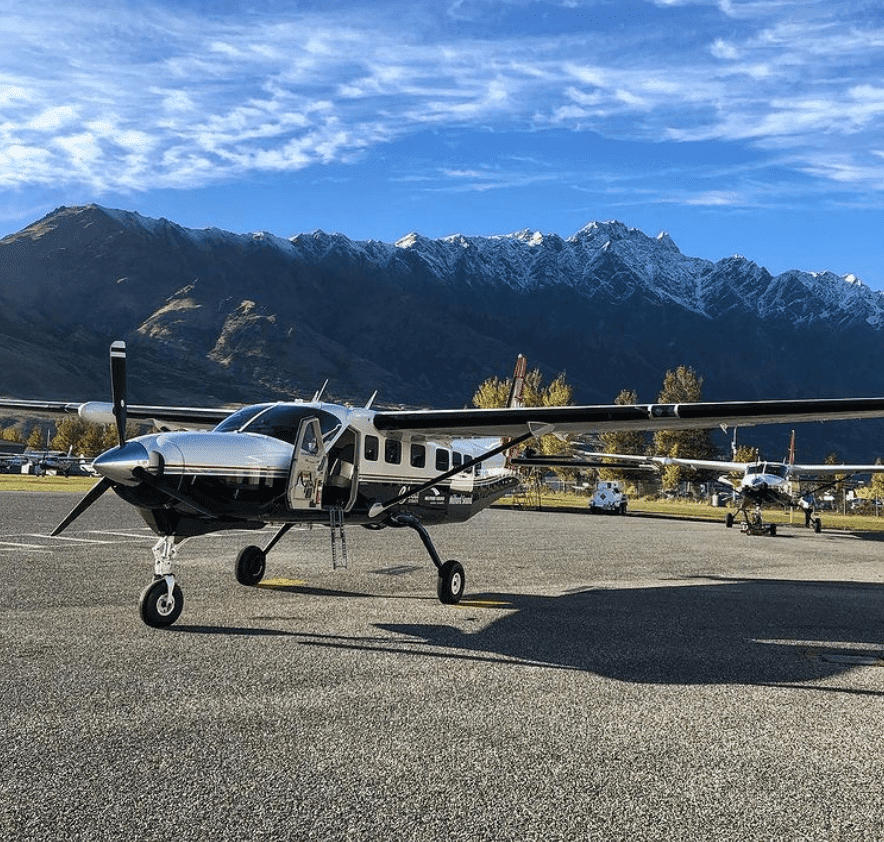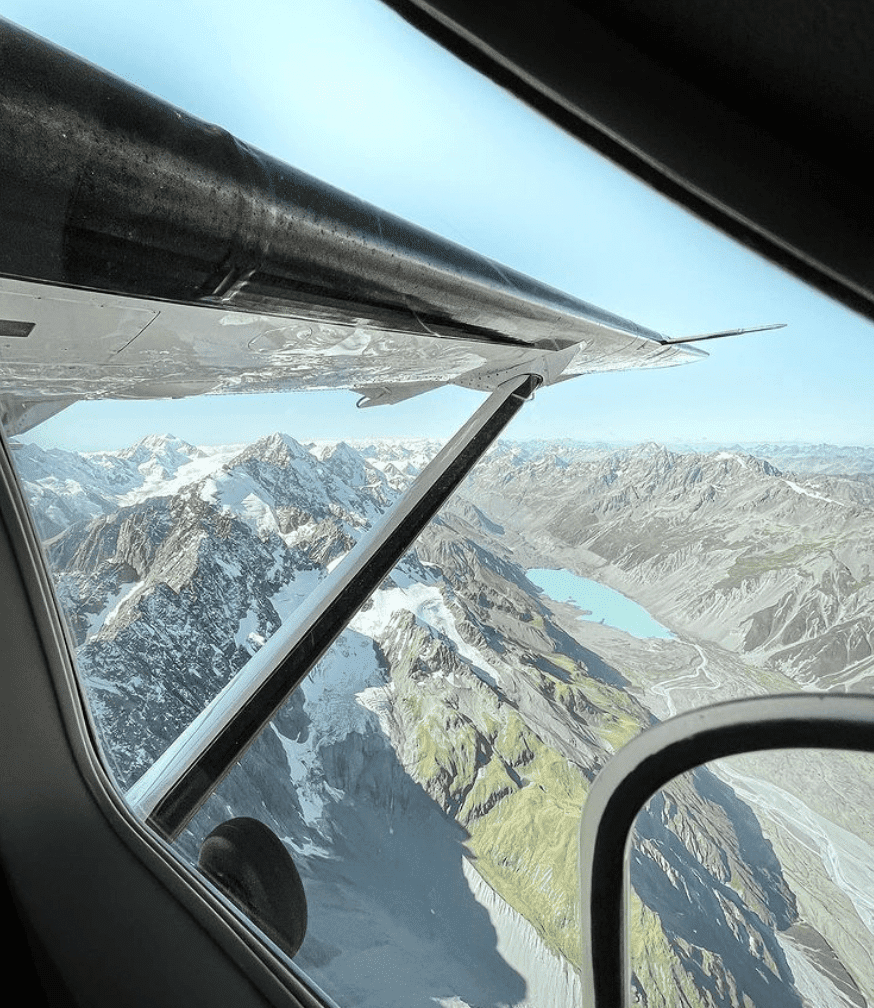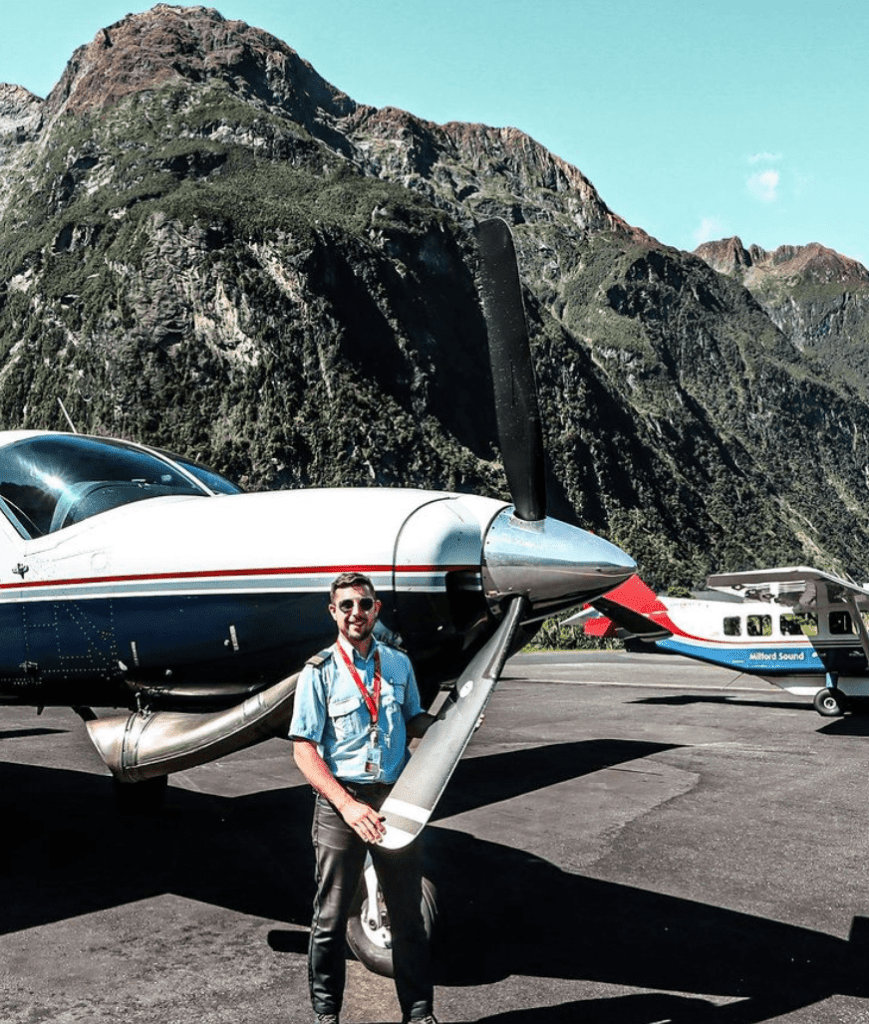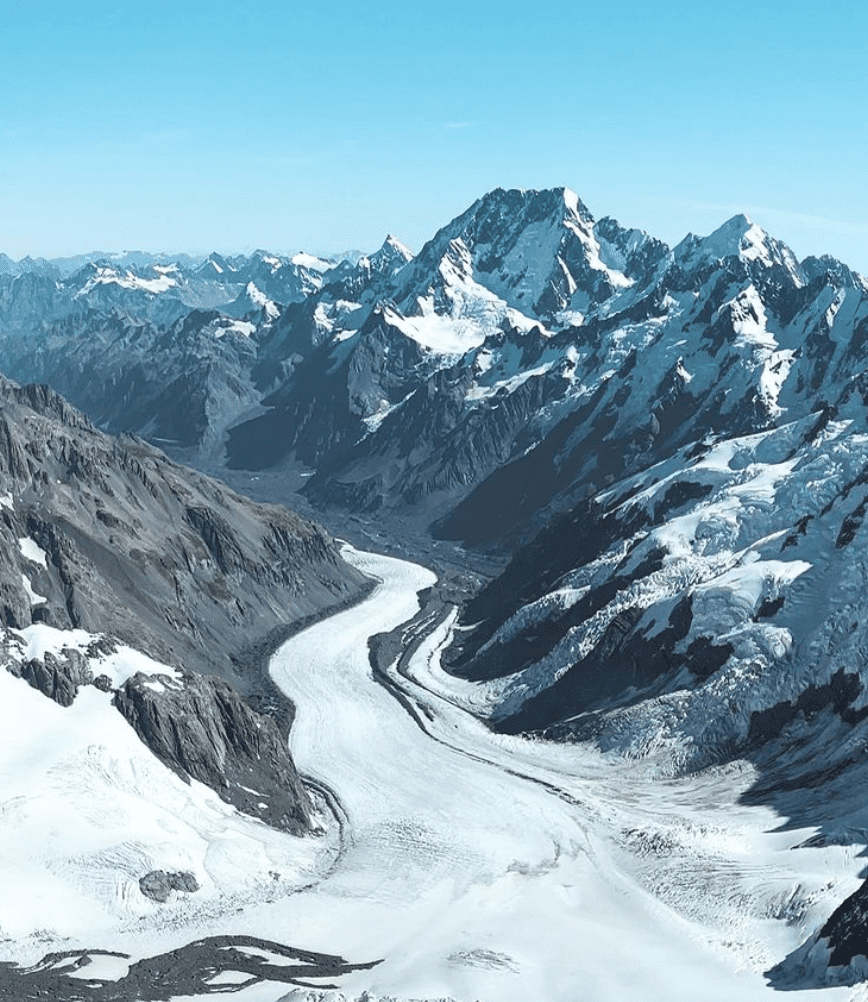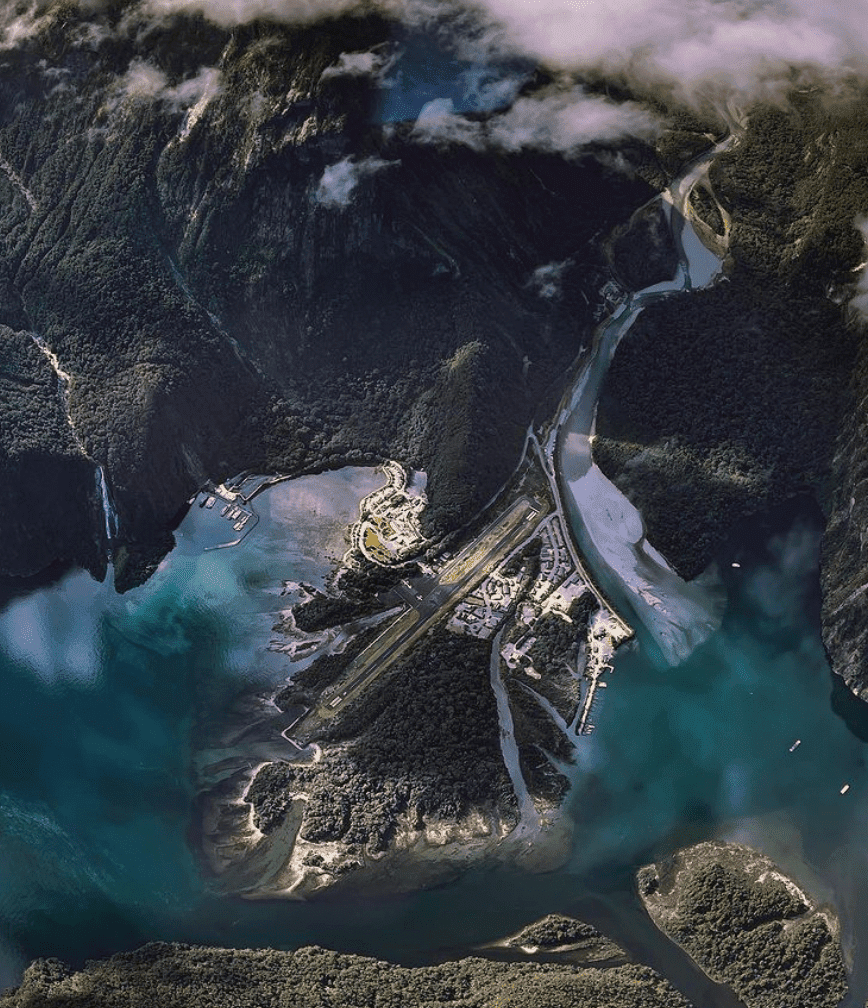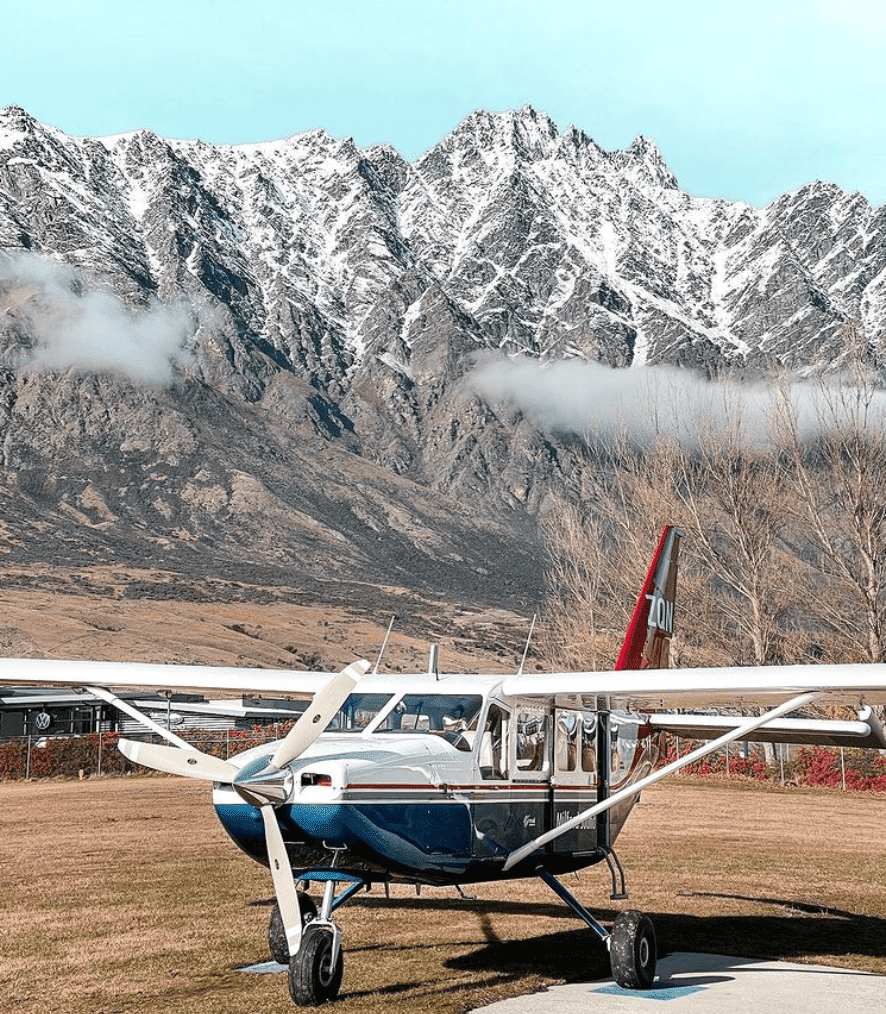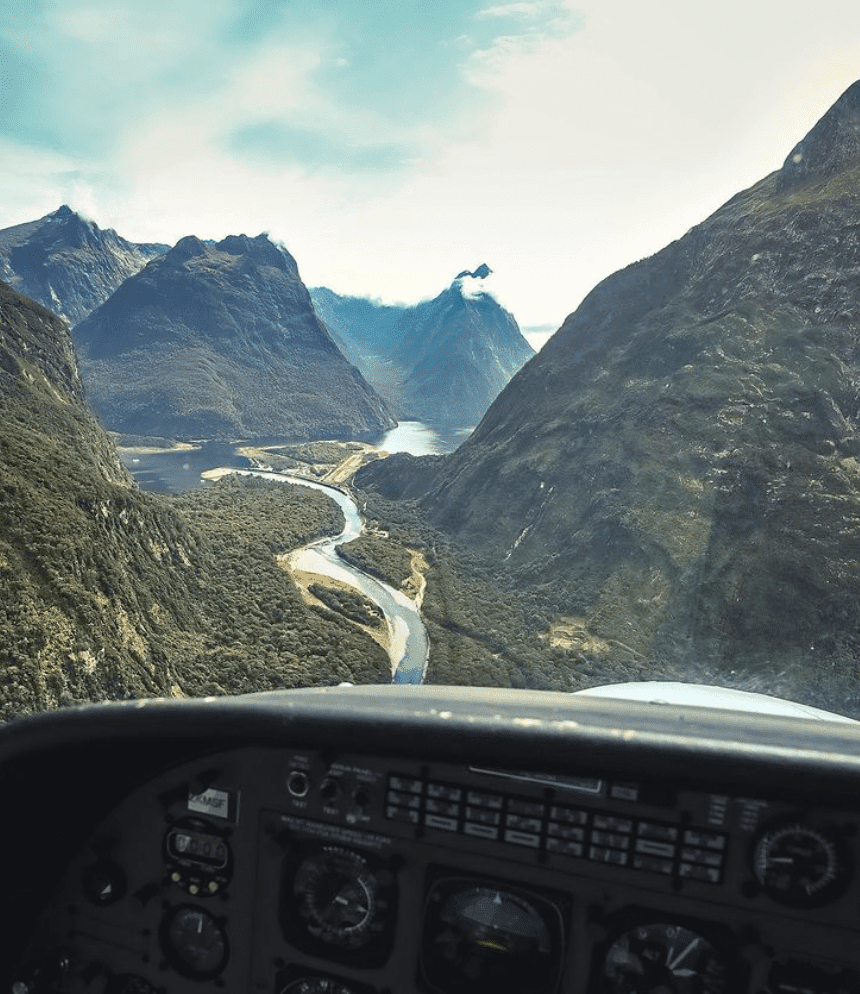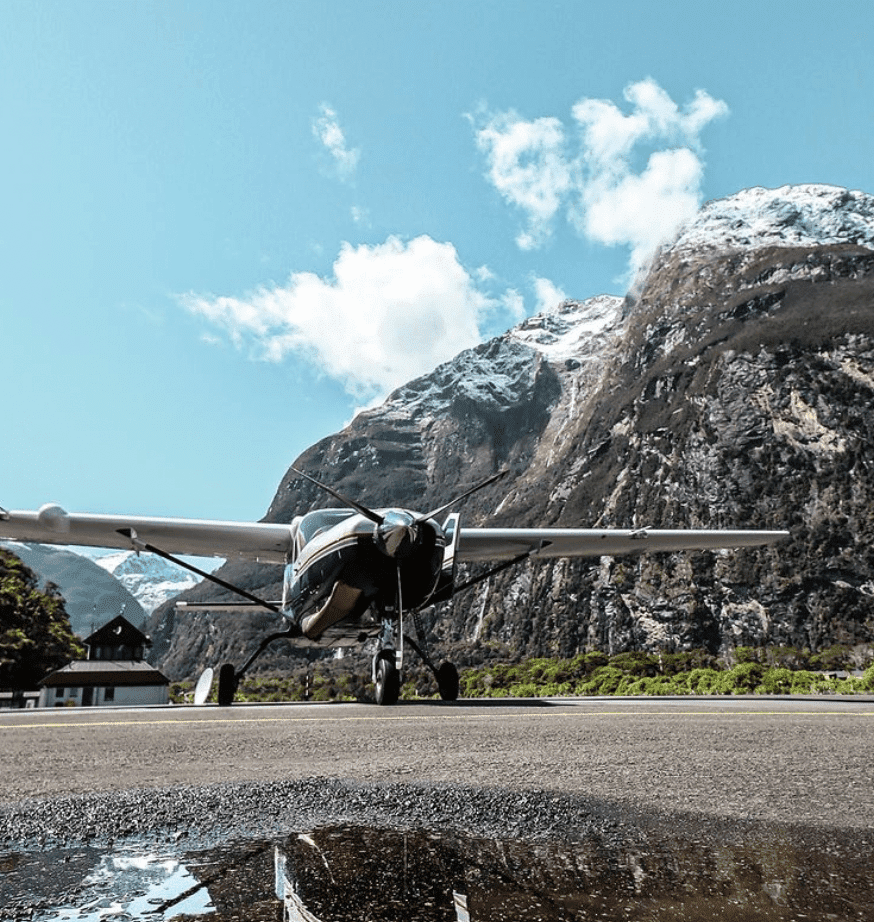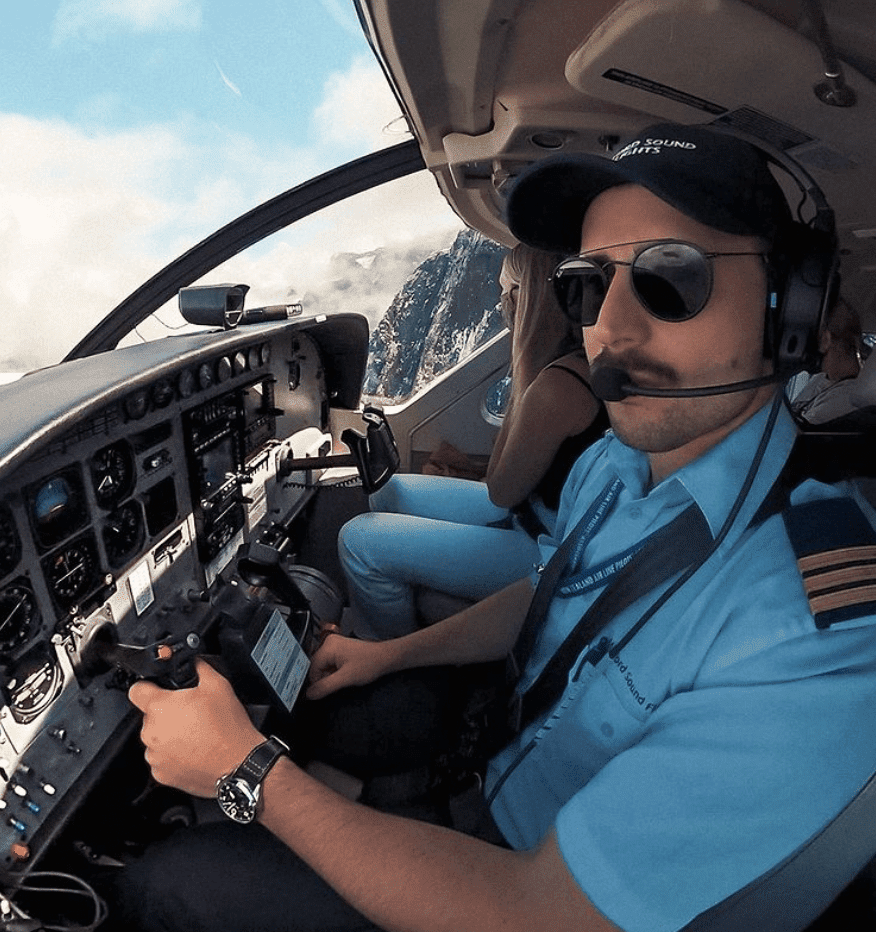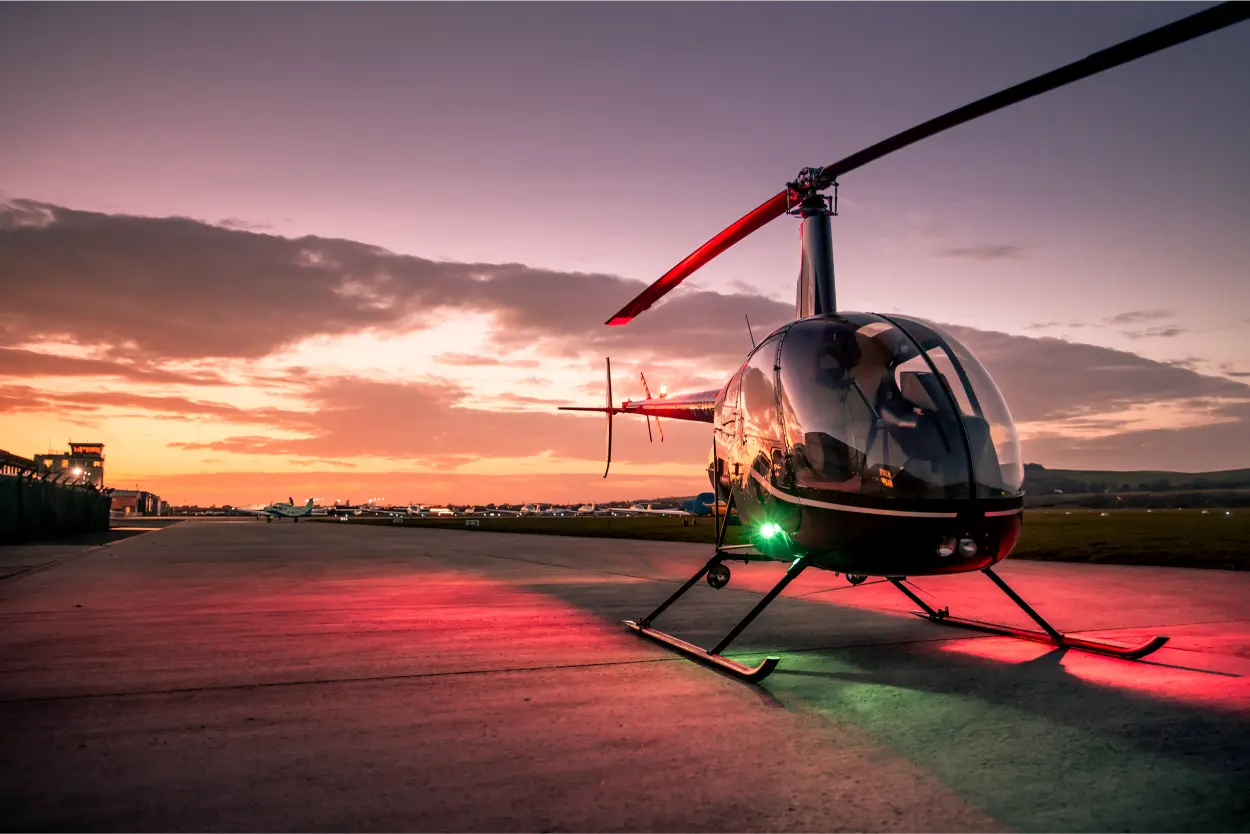Position and base:
Milford Sound Flights Ltd Safety Manager and Line Pilot, Queenstown Airport New Zealand.
Job role summarised:
I’m responsible for the Safety Management System of Milford Sound Flights Ltd. At a minimum, ensuring compliance with CAA and HSWA2015 rules and regulations but striving to be an industry leader in all aspects of safety. I manage occurrences, complete risk assessments, monitor change management and lead audits (internally and externally), as well as edit our exposition documentation as required. Plus, I get to fly the GippsAero GA8 Airvan and Cessna 208B Grand Caravan, from Queenstown Airport to Milford Sound Airport! We fly scheduled scenic flights for tourists to experience Milford Sound from the air, then by boat before flying back over beautiful Fiordland National Park to Queenstown.
What does a typical day in the life of a mountain sightseeing pilot entail?
Things have changed dramatically since COVID-19. Tourism has been reduced by 80-90%, so my days have been pretty quiet. We used to make about 4-5 trips per day, and now average about 1-2. In between flying, I’m doing administrative work to keep our Safety Management System up to date and effective. I’ve also stepped down to part-time hours, due to financial reasons. I was previously volunteering for St John Ambulance, and was lucky to pick up a job as a full-time relief Emergency Medical Assistant. Between my two roles, I’m also studying to become an Emergency Medical Assistant with St John Ambulance. I also find time to run my own small business (Two Nine Aviation Apparel) and go to Mixed Martial Arts training or the gym.
Why did you choose this job at a Mountain Sightseeing Pilot in New Zealand?
The flying school I attended ran an annual South Island Trip to Queenstown, in order for students to experience mountain flying in the Queenstown Lakes area and Fiordland. After I had a taste of flying amongst the mountains, I was hooked! As soon as I had finished what I wanted to achieve at flying school, I moved to Queenstown and began looking for work (it took me 3.5 years to get a flying job).
What’s your favouite part of being a Mountain Sightseeing Pilot in New Zealand?
Simply flying amongst the mountain ranges of Fiordland National Park.
One great thing about your company?
Great leadership from the Operations Manager, he’s awesome to work with!
What do you find the 3 most challenging aspects of the job?
1. The weather in Fiordland/Milford Sound being un-flyable about 40-50% of the time, and 95-99% of tourists only want to go to Milford Sound. There’s so many other amazing places we could fly them, such as Tititea Mt Aspiring or Aoraki Mt Cook!
2. Making weather calls that predict 4-5 hour windows in Fiordland, some days this can be very challenging with the Fiordland ‘weather machine’.
3. Navigating Firodland in poor weather conditions. We’re a day VFR only operation, sometimes the weather can catch us out and we can end up flying close to VFR meteorological minimas. You need some good experience under your belt to recognise the various valleys and mountain passes, as well as operate the aircraft with correct mountain flying technique.
Most surprising part of the scenic pilot job?
How many customers turn down an opportunity to fly to Tititea/Mt Aspiring as an alternative to Milford Sound, when Milford Sound weather conditions are not suitable – and its the customers last chance to fly before they travel home.
Most memorable day on the job?
Every year we partner up with the great people at NIWA (National Institute of Water and Atmospheric Research) and Victoria University of Wellington scientists to complete the annual end-of-summer snowline aerial survey of 50 South Island glaciers (see video here!), taking thousands of photographs to evaluate the snowline altitude and build 3D models of the glaciers.
These are then used to assess how much of the previous winter’s snow has remained covering each glacier to contribute toward long-term glacial ice accumulation. The snowline survey began in 1977 and provides a valuable long-term record of how New Zealand’s glaciers have retreated over time due to climate change.
It was a foggy start to the day at Queenstown Airport on the 19th of March 2021. We knew the weather was CAVOK throughout the Southern Alps thanks to satellite imagery, so it was just a matter of escaping the low cloud in the Queenstown Basin. A delayed departure allowed enough time for a gap in the cloud to appear towards the south. We were airborne at 09:10am, eight people on board the Cessna Grand Caravan 208B now heading for the Humboldt Mountain Range to view the first of the 50 glaciers.
From here we tracked further south towards the Wick Mountains, then North to the Mt Aspiring National Park. It was easy work up at 10,000ft, cruising through Fiordland. There was a bit of a knack to the constant radius turns around the glaciers, whilst avoiding dropping the wing too much into the scientists field of view. Over 3.5hrs we made it up the West Coast to Hokitika (NZHK) for a much needed leg stretch.
Now for our 3.5 hr journey back along the Alps to Queenstown. There were many highlights on the trip, but Aoraki / Mt Cook was especially stunning. Not a cloud in the sky and hardly a breath of wind, we made our way up and down the Haupapa / Tasman Glacier at 10,500 ft. I’d never spent so much time at this altitude around Mt Cook, it was truely stunning to gaze into the glaciers that surrounded us.
A long day of side slipping and constant radius turns, 6.9hrs total flight time once we arrived on blocks back at the Milford Sound Flights apron. One day I will never forget.
If you could go back to the start of your career and do anything differently, what would it be and why?
I would of kept life a lot more simple… Don’t get tied down with responsibilities, stay a free agent! This just helps you move quickly, so you can follow job opportunities. Probably would of waited a bit longer before I sat my ATPL exams. I thought the 10 year validity would be plenty, but it turns out a brief medical loss and job hunting can soak up a lot of time. I still have time to gain an ATPL licence, but its getting a bit close for comfort!
Most asked question/common myths you’d like to answer once and for all about pilot life?
A lot of people think that pilots get paid a lot of money (regardless of what part of the industry they’re in). Flying in general aviation is not very lucrative, in fact it’s really tough for a lot of pilots… but we do it because we love aviation.
Would you recommend your career path to budding or current pilots? Any advice for them?
Flying for Milford Sound Flights Ltd has been my only flying job so far… 90% of my work experience has been ground based aviation support roles (which helped my career development a lot). Working in various aviation ground support roles will teach you a lot about aviation and make you a better pilot once you start flying because you’ll appreciate the bigger picture and understand the work that other people are doing around you. I would definitely recommend getting some mountain flying time, it’s great for helping you develop command decision making under time pressure and its epic fun. Always good to have some cool stories to tell if you end up flying long haul. To budding pilots; make sure you have a diverse skill set, you’re only as good as your next medical! Stay passionate and determined, once you get that first job your career will accelerate.
Rough flying hours per month?
Since COVID-19 = 8.5hrsBefore COVID-19 = 24hrs
What’s the salary for a Mountain Sightseeing pilot in Milford Sound?
Since COVID-19 = $1600NZD NET (part-time safety manager and line pilot)
Before COVID-19 = $3000NZD NET (full-time line pilot)
What’s your future plan?
I spent approximately 7 years working for Air New Zealand on the ground, and I’d love to work for them one day as an airline pilot. (See our blog post here, or diary here to read about what it’s like being a modern day airline pilot). My next step is to get a MEIR job and start building hours. I’d really like to fly for an operation that flys as an Air Ambulance, so I can combine my piloting and emergency ambulance care skills.
A bad day at work…
Any incident or accident that leads to an undesirable outcome.
A great day at work…
Flying around Mt Tutoko in perfect weather!
We’d like to say a huge thanks to Karl Le Couteur for taking the time to share his experience. If you have any thoughts or questions, please put in the comments below!
Be sure to checkout his awesome clothing line Two Nine Apparel!
Helpful Related Links
Milford Sound Flights
Aviation Job Search – Jobs
Share post with a friend:



